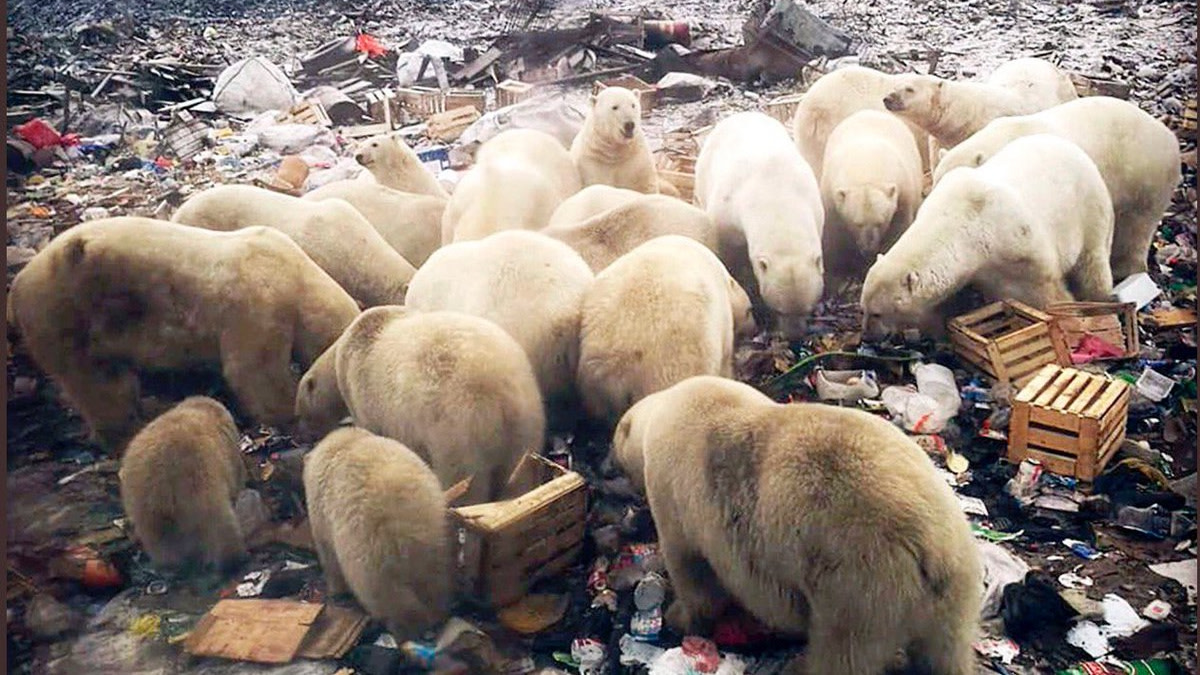
Residents of the Russian community, Belushya Guba, a settlement that’s part of the Novaya Zemlya chain of islands in the Arctic Ocean, have a longstanding familiarity with polar bears. Six to 10 bears are considered “locals” that never leave the territory, but recently that number became inflated.
“I have been in Novaya Zemlya since 1983, but there has never been so many polar bears in the vicinity,” said Zhigansha Musin, head of Novaya Zemlya, in an interview with TASS.
According to officials, at least 52 polar bears were spotted near the settlement. The bears attempted to break into homes and businesses, with residents filing new complaints nearly every day. Social media echoed the chaos as posts on Twitter and Facebook showed the bears walking through playgrounds, backyards and an apartment lobby. It caused authorities to declare a state of emergency.
“The people are scared,” read an official statement. “They are frightened to leave homes, and their daily routines are broken. Parents are afraid to let the children go to school or kindergarten.”
Researchers have a good idea of why the bears took the town hostage. Polar bears spend most of their winter on sea ice where they hunt seals, and it’s believed there has been a decline in sea ice, seals or both.
“Polar bears are reliant on seals for food and seals rely on sea ice,” said Liz Greengrass, director of the Born Free Foundation, in an interview with CNN. “Global warming is melting the ice so it has a chain reaction on how polar bears can survive.”
Most years, the bears will arrive on the ice sheets in December. This season, the freeze was delayed three to four months in some parts of the Arctic, and it caused the bears to head inland.
“It’s sort of like, you go to a restaurant and the restaurant is closed,” said Andrew Derocher, a polar bear researcher from the University of Alberta, in an interview with VICE. “So where do you go? You keep wandering until you find one that’s open.”
In this case, the bears turned the local landfill into an all-you-can-eat buffet. At one point, over a dozen of them were photographed ravaging through the garbage: a problem that isn’t unique to this particular sloth of bears. In 2006, a town in Canada was forced to close off an open-air dump deemed the “Alcatraz of garbage” that had become a hotspot for polar bear activity.
Eating human scraps alone won’t replace the high-fat prey that these creatures typically feast on in February. An average polar bear needs about 4.4 lbs. of fat per day to maintain its demanding energy levels. Scientists feared that if the bears spent an extended period of time on a trash-only diet, it would lead to malnutrition going into breeding season.
“There is no question: this has been a very difficult year for bears in that part of the world,” Derocher said.
Officials initially struggled to find a solution for the aggressive bears. Some organizations suggested using noise-making machines, bright lights, rubber bullets, and fences to deter bears from entering the town of 2,000, but safety officials said scare tactics weren’t working. Instead, a group of scientists was called in to sedate the bears and haul them out of the village.
However, before the group could assess the situation, the polar bears left the settlement. The state of emergency was lifted 10 days after it was declared, as officials pushed the bears towards an area where enough sea ice had amassed for the them to get off the island.
“The state of emergency was lifted on Novaya Zemlya on Feb. 19, as the numbers of bears have thinned out—some two to three are seen in the distance,” read the official statement. “The danger has been minimized.”
Culling the animals was immediately out of the question as polar bears are listed as endangered in Russia. But later reports indicated the task force was considering lethal means of removal if tranquilization failed.
With recent models suggesting that Arctic sea ice is declining at a rate of nearly 13 percent per decade, it’s unlikely this will be the last time agencies have to choose between our species and theirs.
“There is not much we can do to manage polar bears than to manage human behavior,” Derocher said.
Feature image via Peter Mertagh.






